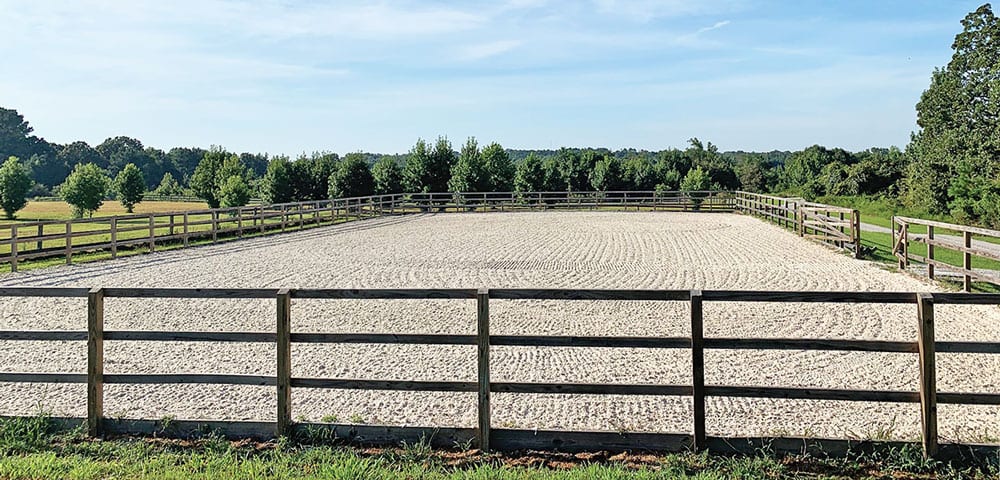 Building your own dedicated horse arena is no mean feat. There are plenty of potential slip-ups you could make but with the right planning and right supplies you should be able to ensure that the horse arena you construct lasts for many years and provides a comfortable, safe environment in which to work with horses. There’s also plenty of things you will need to purchase, and you will want to ensure you get the right materials and tools at a competitive price.
Building your own dedicated horse arena is no mean feat. There are plenty of potential slip-ups you could make but with the right planning and right supplies you should be able to ensure that the horse arena you construct lasts for many years and provides a comfortable, safe environment in which to work with horses. There’s also plenty of things you will need to purchase, and you will want to ensure you get the right materials and tools at a competitive price.
A Good Understanding of Your Land
An effective outdoor horse arena, with year round usage, will need to be constructed to withstand the ravages of the UK weather as well as the considerable wear and tear from horses’ hooves.
Clearing Your Ground
Once you have decided where your arena should be situated, you need to consider the foundation which is one of the most important parts, and one that you have to get right to ensure your eventual top surface performs as well, and is as horse friendly, as it should be.
Overall, the composition of the layers is likely to consist of drainage, membrane, stone and top surface. However, the construction of your base, usually from stone, and ideally from twice washed stone, is the most important aspect of your arena build. Your base will need to be as evenly compacted as possible as a poorly laid base can result in rainwater pooling and the appearance of areas of excessive softness that could be hazardous for horse and rider. Always remember, a good solid base with great drainage will enable a wider variety of suitable surface options are at your disposal.
Good Drainage
All riding arenas need to be constructed ensuring that there is good drainage, and as above this will typically be achieved via a layer of clean stone on top of a properly excavated and levelled subsoil base. Depending on the nature of site, this setup might be adequate to provide drainage on its own, alternatively a drainage system might also have to be included. You also need to consider the use of protective membranes, not only separating the top level from the level below to ensure the top surface is not compromised through usage (You can use a fine aggregate or a non-woven membrane for this purpose), but also, possibly a base membrane to separate the sub-base layer and the drainage layer. This membrane should allow water to filter through freely.
The Right Top Layer
The top layer of your arena is the one in direct contact with horses’ hooves so you need to consider carefully what you want to achieve with your top layer. Some people opt for a soft arena surface, others for one with much firmer surface. However, it’s important to avoid a too-hard surface that might cause contact injuries.
Opt for too soft, and this brings its own issues as this could place undue stress on horses’ tendons and leg muscles. This is because the ideal surface should provide an element of traction in each horse’s stride, and ideally this should be consistent. This is because the horse subconsciously decides when each leg has found a firm footing and then its muscles start to propel it forward. If the horse is on very soft sand, for example, it’s very difficult to determine when its body should begin each “power stroke”. The result can be overstretched tendons and muscles. In addition, the top layer for your arena must be stable enough so that it doesn’t create a dust storm every time a strong wind comes through.
There are lots of different arena surfaces available from a number of different suppliers and these can consist of sand, wax (usually for high end usage), fibres (which can be made from recycled carpet) and even rubber chippings. Talk to a number of suppliers about the advisability and cost of each.
Surrounding the arena surface, usually as part of the perimeter fencing, are retaining boards fitted at ground level to help ensure the top surface stays in place whatever the weather.
Fencing Off The Arena
As for the actual arena itself, you will, of course, need a fence surround and a gate, these are generally constructed from wood. You will require containing boards at ground level to provide a boundary for the horse arena and these are also usually supplied in wood, which will need to be properly treated for longevity. These boards will be supported via the fence posts – again, usually made from wood, and in addition the fence will be completed by the addition of sawn rails and possibly a splash board. As for rough guidelines the fencing and gates around the riding arena should measure about 1.4m out of the ground, with a top rail flush with the top of the posts, and a further one or two rails evenly spaced below, and finally the retaining board at ground level. A good gate size is 3.6m wide installed in the fence line with a horse safe latch.
An Easy Approach…
If it’s your first attempt at constructing a horse arena, the list of things you need to consider and the list of items you will need to purchase can be daunting, which is why many people opt for the choice of pre-packaged riding arena kits which usually contain everything you need to construct your arena, in the right quantities apart from the base and top layers.


